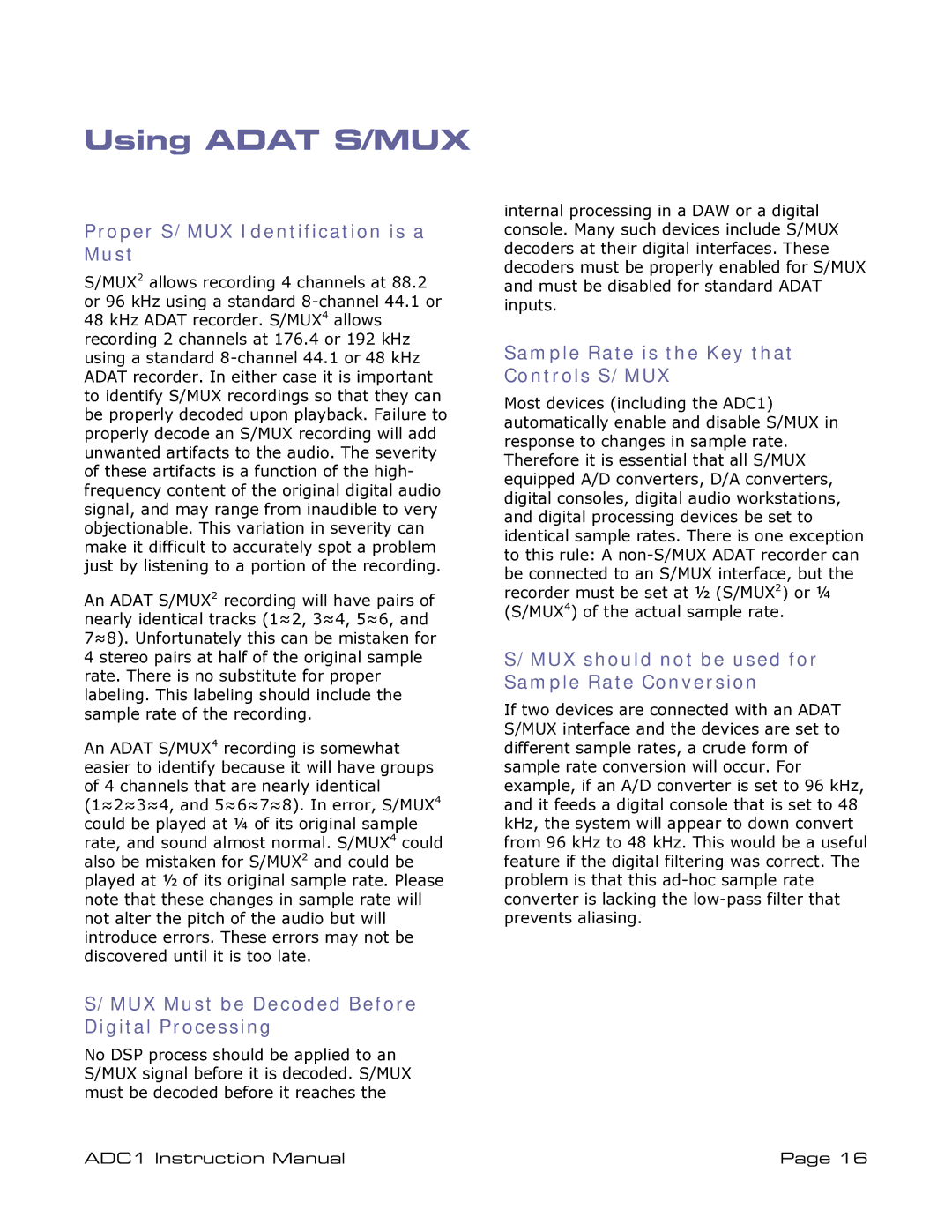Using ADAT S/MUX
Proper S/MUX Identification is a Must
S/MUX2 allows recording 4 channels at 88.2 or 96 kHz using a standard
An ADAT S/MUX2 recording will have pairs of nearly identical tracks (1≈2, 3≈4, 5≈6, and 7≈8). Unfortunately this can be mistaken for 4 stereo pairs at half of the original sample rate. There is no substitute for proper labeling. This labeling should include the sample rate of the recording.
An ADAT S/MUX4 recording is somewhat easier to identify because it will have groups of 4 channels that are nearly identical (1≈2≈3≈4, and 5≈6≈7≈8). In error, S/MUX4 could be played at ¼ of its original sample rate, and sound almost normal. S/MUX4 could also be mistaken for S/MUX2 and could be played at ½ of its original sample rate. Please note that these changes in sample rate will not alter the pitch of the audio but will introduce errors. These errors may not be discovered until it is too late.
internal processing in a DAW or a digital console. Many such devices include S/MUX decoders at their digital interfaces. These decoders must be properly enabled for S/MUX and must be disabled for standard ADAT inputs.
Sample Rate is the Key that Controls S/MUX
Most devices (including the ADC1) automatically enable and disable S/MUX in response to changes in sample rate. Therefore it is essential that all S/MUX equipped A/D converters, D/A converters, digital consoles, digital audio workstations, and digital processing devices be set to identical sample rates. There is one exception to this rule: A
S/MUX should not be used for Sample Rate Conversion
If two devices are connected with an ADAT S/MUX interface and the devices are set to different sample rates, a crude form of sample rate conversion will occur. For example, if an A/D converter is set to 96 kHz, and it feeds a digital console that is set to 48 kHz, the system will appear to down convert from 96 kHz to 48 kHz. This would be a useful feature if the digital filtering was correct. The problem is that this
S/MUX Must be Decoded Before
Digital Processing
No DSP process should be applied to an S/MUX signal before it is decoded. S/MUX must be decoded before it reaches the
ADC1 Instruction Manual | Page 16 |
